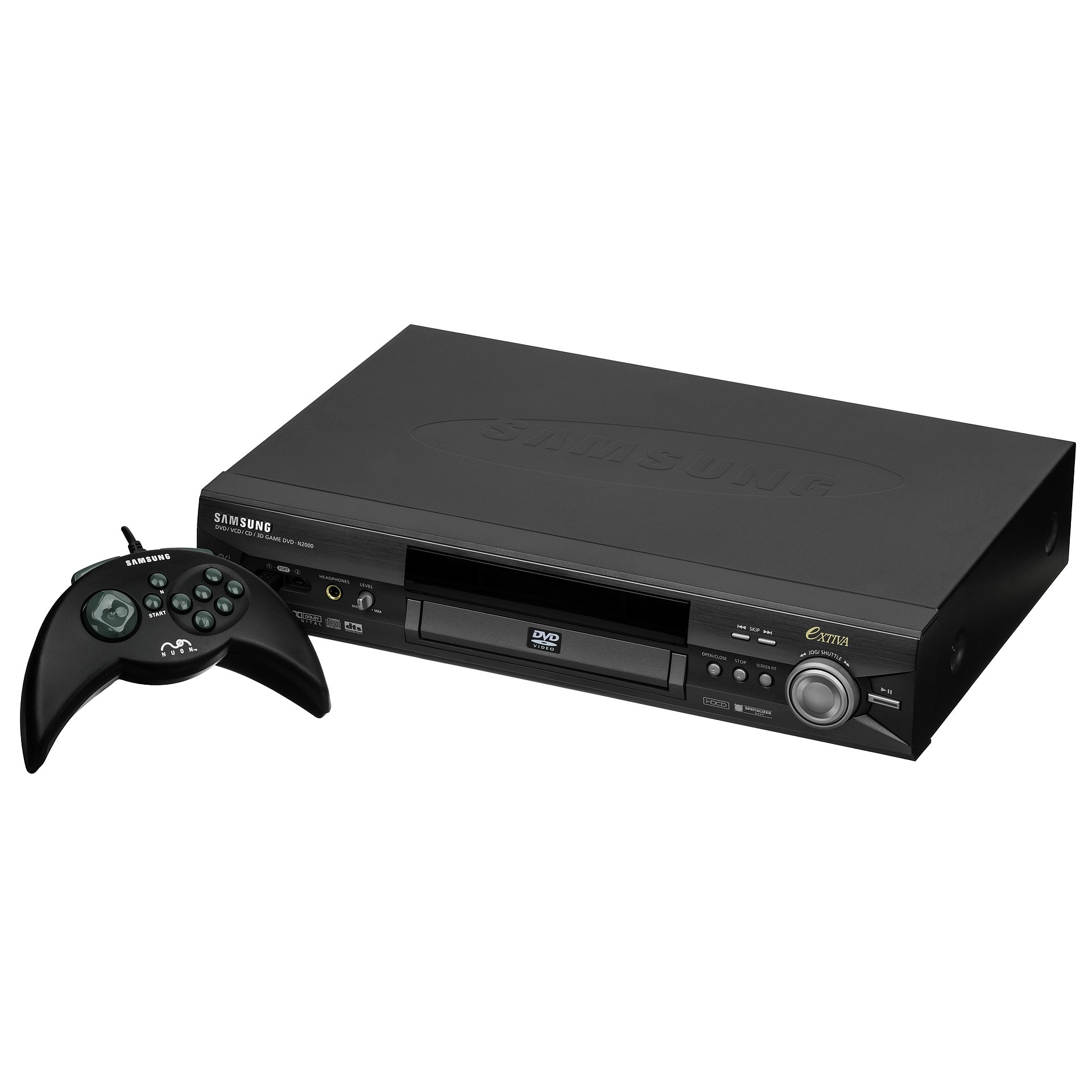|
History
At the beginning of 1995, in the aftermath of the demise of the Atari Jaguar, Richard Miller, at the time vice-president of Atari Corporation, was looking back on the Atari Jaguar wondering how this can have been avoided. The lack of content, the difficulty to program for it and the initial lack of CD support were all amongst the reason why the console failed. At the same time, the DVD was presented as the upcoming new format and Richard immediately understood that the DVD would be a good vehicle to launch a new game console. Solely based on this idea, Richard sold his house, quit Atari and started VM Labs in a spare bedroom.
The idea developed by Miller was simple: replace DVD player video decoder with a processor capable of playing games and incorporating new video processing capabilities. Based on the penetration of the VHS, it was not hard to imagine that virtually all household would one day own a DVD Player and with VM Lab technology in it, his gaming system would be everywhere.
Richard was able to convince five people to invest $200,000 in VM Lab, including Nicholas Lefevre a lawyer who helped shape the business plan. Using his contact made when he was at Atari, Richard was able to convince Motorola to produce the chipset following VM Lab’s design. Then Richard decided to contact Toshiba because of their involvement in the creation of the DVD. Toshiba agreed to integrate the VM Lab technology in their product granted that it would work.
Dubbed Project X, VM Lab then started a crusade to promote their exciting technology to various Hollywood studios and game publisher. VM Lab managed to get some major studio on board, but the gaming industry was more reluctant to get involved. A few ports of existing titles such as Myst and Madden NFL were announced, but big studios were afraid to sink time and money for a console with potential to be big while they could be working on console they knew was successful and wait for the release of Project X before committing any resources to it.
The development cycle continues for both the hardware and the software. During that time, Project X change its name for Nuon and a few games from small-time developers were announced including Tempest 3000, the sequel to Tempest 2000 on the Atari Jaguar. VM Labs also partnered with other DVD Player manufacturers such as Samsung and RCA.
Release
By May 2000, DVD Player with Nuon technology started to be released. First came the Samsung Extiva DVD-N200 than the Toshiba SD-2300. The technology was well received by the press and it seems that Richard’s bet would finally pay off.
Demise
But it wasn’t long until everything went south. First of all, the launch titles were late to the party. When the titles finally got out, they had difficulty generating any attention from the press. The technology was already showing signs of ages as it was capable of N64 graphics in a time where the Dreamcast was already a reality.
The sales of the games were low which in turn resulted in low profitability for VM Labs which was desperately looking for more funding. VM Labs was licensing the technology to its hardware partner and the software creator. Toshiba and Samsung were prudent and only released few compatible units at first to limit their exposure and with games selling fewer than 10,000 units, the money coming from licensing fees was not enough to keep VM Labs afloat. By 2001, Richard Miller was spending 100% of its time trying to get more funding. Overall, VM Labs was able to secure 30 million dollars were 60 million would have been required.
By the time Toshiba and Samsung had entered mass production of their respective units, VM Labs was out of money. At this time, VM Labs was months away from profitability and in a last ditch effort to save the company, Nicholas Lefevre put VM Labs into bankruptcy and tried with Richard to purchase the assets to continue the work. Sadly they were outbid by Genesis Microchip.
Genesis Microchip tried their best to push the Nuon technology but after failing to bring on board low-cost manufacturers and with a failed deal with Disney in 2003, they completely drop the technology.
Technical Specifications
| Processor | 16 bit 333MHz Quad core VM labs Nuon MPE |
| Memory | 32-megabyte 8-bit Fast Dram at 33Mhz |
| Video Processor | 2x 3d Media GL MPE with 8-megabyte video ram |
Model
| Company | Model | Region |
| Samsung | DVD-N501 | North America |
| Samsung | DVD-N2000 | North America |
| Samsung | DVD-N504 | Switzerland |
| Samsung | DVD N505* | UK and Germany |
| Samsung | DVD-N591* | Korea |
| Toshiba | SD-2300 | North America |
| RCA | DRC300N** | North America |
| RCA | DRC480N** | North America |
* When Samsung realized that games would probably not be released outside of the U.S, they decided to remove the joyport to avoid confusion.
** The RCA model doesn’t support the official Nuon games but they do support the Homebrew.
Games
- Tempest 3000
- Freefall 3050 A.D.
- Merlin Racing
- Space Invaders X.L.
- Iron Soldier 3 (later recalled by VM Labs due to incompatibility with some players)
- Ballistic (only available with Samsung players)
- The Next Tetris (only available with Toshiba players)
- Crayon Shin-chan 3 (Korean-only release) (짱구는 못말려 3 –돌아온 짱구–)
Movies
- The Adventures of Buckaroo Banzai Across the 8th Dimension
- Bedazzled
- Dolittle 2
- Planet of the Apes
Controllers
- Logitech Gamepad
- HPI Stealth controller
- HPI Warrior Digital-D pad
- Samsung NUON Controller
Reference
Remembering Nuon, the gaming chip that nearly changed the world—but didn’t

